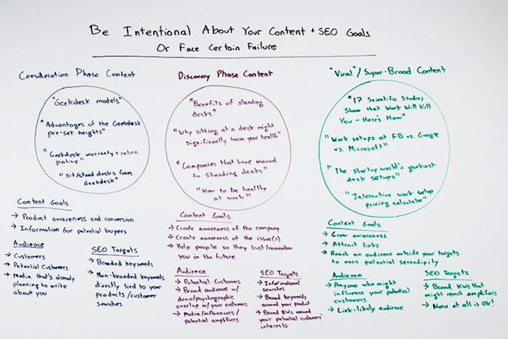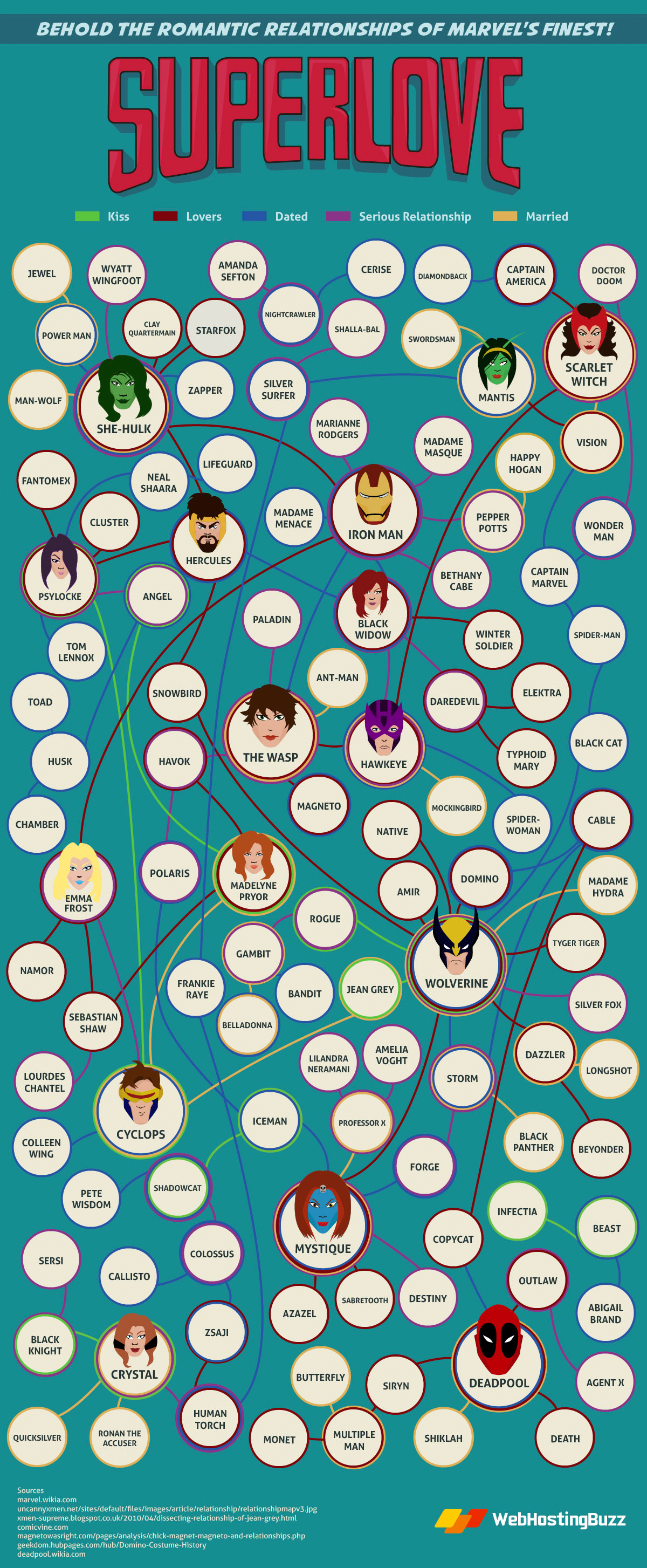The One Thing Missing from Your Content Marketing Strategy

One of the best Moz Whiteboard Friday episodes ever features Rand Fishkin talking about content goals and how to map content to different phases of the buyer journey.
In it, one of the content phases he describes is what he calls “Viral” or “Super-broad”.

This is stuff, he says, that strays far beyond just talking about your products or brand. It may even stray beyond talking about the issues related to your product or brand. It may have nothing to do with your industry or category at all, so long as it still appeals to your audience and aligns with your brand.
In our experience, this is the hardest kind of content for many brands to wrap their heads around, because it falls so far out of what they expect “content marketing” to be.
A useful and pretty accurate definition of content marketing for a brand that gets it might look something like this:
Content marketing is just solving the same problems your product solves through media you create and promote.
So then, a brand marketer might ask, "Why would I write about something that not only doesn’t push my products and services, but doesn’t even touch on the same issues?"
Our answer: for the same reason big brands pour endless dollars into Super Bowl ad campaigns.
Scoring Big with Super Content
Think about it.
Every February, brands pay millions of dollars for a 30-second ad spot to get in front of an enormous and highly engaged audience.
And what do they do once they get one of these highly coveted spots? Do they run their standard benefits-focused commercials?
Not a chance.
It’s just not worth running an ad about the benefits of Tide with Bounty at such a high price point when only a small percentage of people watching football a) care at all about detergent and b) make the purchasing decision for their household.
So what do these brands do?
They come up with something new. Something exciting. The ads they run during the game are usually funny or dramatic or scary with barely a hint of any branding whatsoever. Sometimes you can’t even recall what or whom the commercial was for the minute it’s over.
But you remember that it made you laugh or cry (if it was any good, that is).

Maybe you track it down on YouTube and share it with your friends. Or you Google it and read an article from AdWeek or a like publication like it about the story behind the ad. Or maybe you just chat about it at lunch with your coworkers the next day and some of them go on to look it up for themselves.
And pretty soon the brand that produced the commercial has media and blogger links, traffic, PR and, for lack of a better word, “buzz” swarming around them.
Small Scale, Huge Success
You don’t need a billion dollar budget or a flashy brand to do this exact same thing on a smaller scale online.
Take, for instance, this infographic about the dating history of all the different Marvel superheroes.
It was created by a hosting company called WebHostingBuzz, which is initially a bit confusing because hosting and super heroes have almost nothing in common.
Except one thing: the audience.
Whatever research WebHostingBuzz did going into this piece of content told them that a lot of their customers are comic book lovers. So they created something they knew these people would love, and better yet, something they’d want to share within their community of like-minded friends and colleagues—even though it had nothing to do with the company’s actual offerings.
In the end, the infographic ended up going “viral”, getting posted on geek blogs all across the web, driving links, referrals and new fans into the waiting arms of the hosting company.
At a lot of companies, an idea like this would have never made it past the “brand” team.
Broad appeal content like this can take many different forms.
There’s the small: blog posts, articles and other written content. For example, we wrote a blog post called The Science Behind Cannabis and Creativity almost three years ago now, and it continues to be our most visited piece of content.
There’s the medium: videos, infographics and other content with higher production value but also higher sharing potential. Think about “First Kiss”, the viral (101 million views) and adorably awkward video of strangers kissing for the first time, produced by clothing designer Wren.
Then there’s the epic. Think Red Bull Stratos or Red Bull’s extreme jump stunt, which spawned dozens of smaller content pieces (articles, videos, social content) and drew millions and millions of viewers.
Developing Broad Appeal Content Ideas
So if you’re sold on the benefits of broad appeal content, where do you start?
Dive into the interests of your audience. Don’t just think about what they want or need from you from a product perspective. Spend some time learning about their other interests. Just like WebHostingBuzz found their main customers also happened to love comics, you might find a similar opportunity if you dig a little deeper.
Consume the broader content landscape. Move past only analyzing what competitors and industry peers are talking about. Start reading Buzzfeed, The Atlantic, The New Yorker, Upworthy and other publishing giants to get a sense for what’s truly shareable in the eyes of everyday people.
Filter ideas through your established brand messaging. While the goal is to give your audience something awesome, you don’t want to chase trends or cultural ebbs and flows. Stratos worked for Red Bull because their brand is all about “extreme”. “First Kiss” worked for Wren because it reflected the kind of lifestyle they want their clothes to represent. See if there’s a way to stay consistent in how you’re presenting yourself as you expand your idea of content.
Commit to the process. Big-swing content ideas aren’t a science. You’d be surprised how many big brands with huge editorial resources have completely struck out on some of their signature content attempts. Stay patient—all it takes is one big hit to make a huge impact. In the meantime, continue creating more proven kinds of content that fall under Discovery and Consideration. A healthy mix is the most effective approach. (Again, it’s worth watching the full Whiteboard Friday to see how this all works).
Swinging for the Fences
The biggest mistake brands make in content strategy is writing only what they WANT their audience to read about, because they know even if the piece doesn’t become a smashing success, it will at least hit the PR/brand/call-to-action/ROI checkboxes.
Broad appeal content is the exact opposite. It’s creating something you know your audience will love, while taking a leap of faith that it will pay off for your business down the road.
With everyone and their brother creating heaps and heaps of “quality content”, maybe it’s time for brands to start taking bigger chances and putting their audiences first.
Super Bowl-sized rewards may be just around the corner.

Comments
Add A Comment